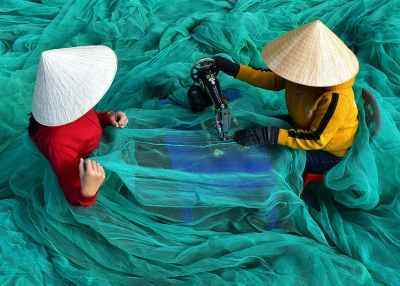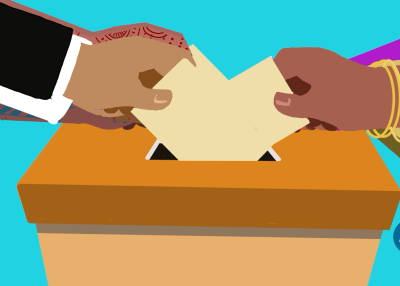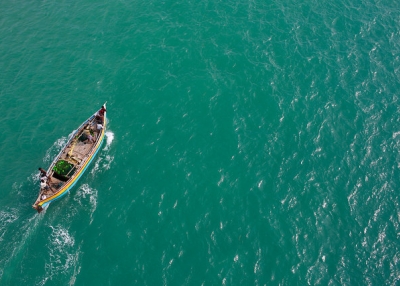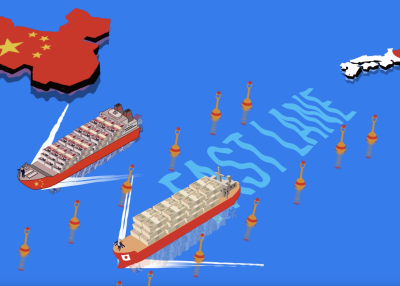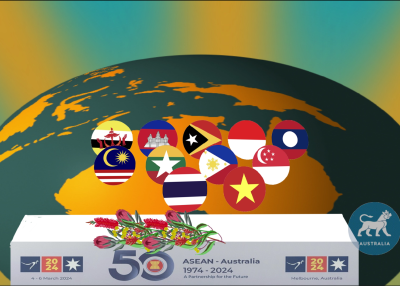East Asia and the War in Ukraine
by Richard Maude, Executive Director, Policy, Asia Society Australia
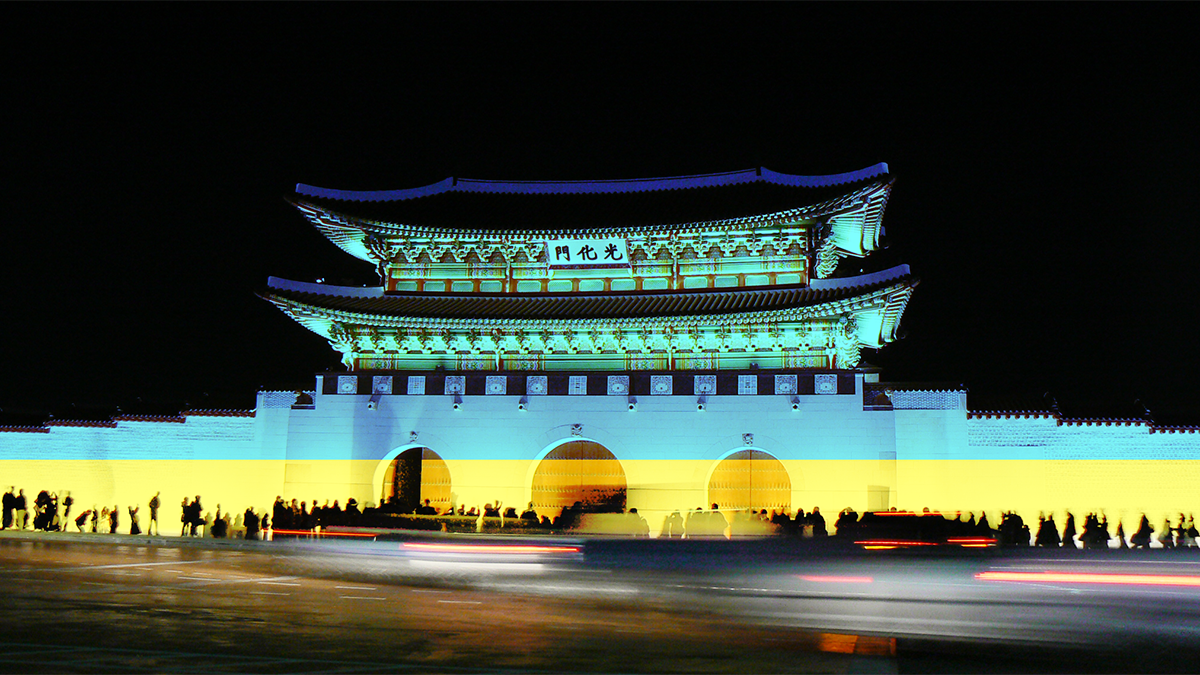
China’s economic and military power, and its willingness to use both in coercive ways, is the primary driver of security change in East and Southeast Asia. Russia’s invasion of Ukraine won’t change this. But the war and its strategic consequences are nonetheless washing over the region, hastening the arrival of a trifurcated security order.
Japan and Australia are binding themselves closer to the United States in opposition to China and Russia, while most of Southeast Asia has again planted itself firmly in what Michael Mazar describes as the “hedging middle” of world politics. In recent years, South Korea has sought both to hedge and tend to its sometimes difficult alliance with the United States. But a new conservative administration is strengthening its alignment with the democratic group. The rippling effects of the war in Ukraine will give this shift greater momentum.
Neither China nor the threat from Russia will lead to an alliance like NATO in East Asia, nor even a seamless bloc. But a constellation of US-led democracies, bound closer by shared concerns over China, now has even greater common purpose. High on the agenda are more urgent efforts to bolster deterrence and lessen economic and energy dependencies on autocracies where these have strategically significant consequences.
Equally, the war in Ukraine throws into starker relief the divergence between Southeast Asia and the United States and its allies on how to respond to the challenge to rules-based order from China and Russia.
Japan and Australia – Democratic Anchors
In the short term, Japan’s and Australia’s priorities are to back American global leadership, support Ukrainian sovereignty, and impose meaningful costs on Russia. Beyond this, policymakers in Tokyo and Canberra are sharply focused on the implications of the war for what they see as the main game: the contest to shape the Indo-Pacific and constrain China’s coercive power.
Both nations are deeply concerned at the blow Russia’s aggression strikes at rules-based order. Both worry about the precedents the invasion might set for Taiwan and the Japanese-administered Senkaku islands (“we should never, ever allow a similar incident to happen in the Indo-Pacific”, Japanese Prime Minister Fumio Kishida has said). And both share Washington’s concern that China is doubling down on a long-term entente with Russia aimed at weakening US power and influence.
In Japan, the invasion of Ukraine won’t result in the kind of overnight revolution on security policy seen in Europe, especially in Germany. Still, as Takako Hikotani writes, Prime Minister Kishida has abandoned a long-standing policy approach to Russia centred on hope – and little more than that – that keeping Russia relations in good order could lead to progress on the disputed “northern territories”.
The invasion has given more urgency to the debate in Japan about how it can best defend itself and resist aggression and coercion, especially from China and North Korea. During the recent visit to Tokyo by President Biden, Kishida spoke repeatedly of his “determination to fundamentally reinforce Japan’s defence capabilities” and “secure a substantial increase” in the defence budget. This determination is likely to lead to shifts in Japan’s defence capability and posture that are radical by the standards of Japan’s post-War history and that will have significant implications for the strategic landscape in East Asia. Japan, for example, could acquire long-range strike capabilities, potentially including ballistic missiles, and lift defence spending to two per cent of GDP from its current level of about one per cent.
Australia’s security and prosperity are inextricably linked to East Asia. China’s challenge is also already driving investment to deliver an Australian defence force with more offensive punch. The lessons from Ukraine are giving these efforts greater salience and urgency. Australia wants more deterrence power and to be able to punish an aggressor at distance, but the long lead times for its new nuclear-powered submarines, Hunter class frigates and indigenous long-range strike missile capability leave Australia vulnerable in the medium-term. Learning from Ukraine, especially the effectiveness of missiles, drones and anti-tank weapons, future Australian governments might also want a less conventional-looking force structure. The newly-elected Albanese government has committed to spending two per cent of GDP on defence: this number may need to go higher in the future.
The invasion of Ukraine reinforces the logic and imperative of the Indo-Pacific strategies of Japan and Australia, which seek to support a favourable balance of power in the region. Both nations will continue to invest heavily in the US alliance system, the Quad, and regional partnerships designed to support resilience and autonomy and provide choices in aid, trade, investment, infrastructure, and security cooperation. The Albanese government will bring renewed energy to this task in the Southwest Pacific and Southeast Asia.
The acquisition or hosting of nuclear weapons by Japan still seems unlikely, but perhaps less unlikely over time than it was before the war. Japan’s former Prime Minister Shinzo Abe and other LDP heavyweights have re-ignited debate about the possibility of the country requiring its own nuclear deterrent, or at least bolstering America’s extended deterrence: Abe suggested Japan could host US nuclear missile forces. Kishida was quick to rule this out and it seems very unlikely that Ukraine itself would shift sufficient political and public opinion on this most sensitive of issues for post-War Japan. Still, some Japanese thinkers argue that China eventually will leave Japan no choice. Similar voices can be heard in South Korea.
Change in South Korea
Where does South Korea fit in this geo-political puzzle? Under the Moon Administration, South Korea was too often paralysed by worry about upsetting dialogue with North Korea and too inclined to doubt its own agency when dealing with China. Maintaining the benefits of relations with both China and the United States was the goal. The result was strategic fatalism and inertia, and quietly frustrated policymakers in Washington, Canberra, and Tokyo.
South Korea’s new President, Yoon Seok-yeol, has already signaled he will cleave closer to the United States with a foreign policy shaped by liberal democratic values. He describes the US relationship as a Comprehensive Strategic Alliance encompassing economic security as well as traditional military issues. Yoon spoke at length on the campaign trail about his desire to work in ways that are complementary to the Quad. His administration could deliver Korea’s own Indo-Pacific strategy, or an enhanced New Southern Policy, by the end of the year.
Yoon has China foremost in mind, but the implications of Russia’s war in Ukraine for security on the Korean peninsula should reinforce this policy shift. For North Korea, the invasion is yet another reminder that nuclear weapons are the regime’s best deterrence against US or South Korean pre-emptive military action in a crisis. With the world’s attention on Russia, Kim Jong-un is pushing on with the testing and development of North Korea’s long-range ballistic missiles. A nuclear weapon test might be next.
A credible nuclear threat to continental America potentially increases North Korea’s coercive power over South Korea and the United States. And, as Scott Synder notes, while the possibility of North Korea launching a revisionist campaign to alter the existing border might seem unthinkable given Seoul’s conventional power advantage, “the nuclear dimensions of Russian actions in Ukraine … bear particularly close scrutiny by South Korea”.
The lessons should be clear – South Korea’s alliance with the United States, the US troop presence on the peninsula, and ongoing investment in South Korea’s own military deterrence are essential. Better South Korea-Japan ties would also help. The divide between South Korea and Japan over how to manage the bitter legacies of Japan’s colonial rule in the peninsula will remain difficult to bridge. But the invasion of Ukraine might just be the extra help the two countries need to do so. Yoon wants to bring the relationship out of the deep freezer (his team visited Tokyo even before the inauguration), and Japanese Prime Minister Kishida has the lessons of Ukraine in mind when he says there is “no time to spare” to do so.
Southeast Asia – still looking for middle ground
While China – and now Russia’s aggression – are pushing Japan, Australia and South Korea closer to the United States and to each other, Southeast Asia maintains its determination not to lean too hard to one side or the other. Seen from Washington, Tokyo or Canberra, Southeast Asia’s generally weak response to the invasion (Singapore being a notable exception) might look increasingly anachronistic and untenable in this new world. Seen from the region, hedging in the middle remains a logical, if not essential, pre-requisite for preserving Southeast Asian strategic space and enjoying the benefits of partnership with both the United States and China.
Most Southeast Asian governments regard the war in Ukraine as a distant crisis, one on which there is little incentive to take a clear stand. Nor, as Singapore Prime Minister Lee Hsien Loong made clear again recently, is the region interested in a democracy versus autocracy “competition of systems”.
This divide between Southeast Asia and the US and its alliance partners has been evident for some time over China. For all the homage they pay to ASEAN centrality, the United States and its close partners increasingly are clustering together and working around the group to promote a favourable power balance, and to deliver public goods using the Alliance network and new groupings like the Quad and AUKUS.
The United States and its Indo-Pacific allies can’t let the gap widen further because of the war in Ukraine. To do so risks tilting the balance of power in the region towards China. Beijing has already sought to rally support in Southeast Asia, preying on the region’s reluctance to take sides, and seeking to position China as the region’s development and security partner of choice and a responsible power calling for negotiation and settlement. China also blames sanctions, not Russia’s aggression, for rising fuel and commodity prices. All this is overlaid with a blast of propaganda pointing the finger at the United States for allegedly provoking the invasion and muddying the waters on war crimes.
These endeavours are consistent with long-standing attempts to persuade Southeast Asian nations to stand with China to reject the “old” US-led order and build one more favourable to China and, by extension, the developing world. Southeast Asia elites take this with a grain of salt – trust in China is lower than ever. But Beijing would be content with the way most of Southeast Asia has stayed out of the fray.
Looking ahead
The displays of doubt in media commentary in Japan and South Korea in recent weeks about how far both nations can rely on the United States for their security are not in themselves new, but nonetheless striking in their openness. Even with the best will in the world, such doubts are inherently hard to ease. But they underline the importance of the Biden Administration’s attempts to keep the Indo-Pacific in focus even as it manages the inevitable and necessary demands of leadership in support of Ukraine.
There are other implications here for the United States and its close partners. The Biden Administration says it does not ask Southeast Asian countries to “choose”, but too often its narrative remains infused with a desire to demonstrate that democratic systems are superior to autocratic ones. This is pointless in Southeast Asia – the better approach is to stress shared principles, like sovereignty and non-use of coercion, drawn from the region’s own foundational documents (like the ASEAN Charter and Treaty of Amity and Cooperation).
China’s attempts to rally Southeast Asian countries behind its position on the invasion of Ukraine is also yet another reminder, if one was needed, that the contest for influence in Southeast Asia will require creative diplomacy and deep pockets for the foreseeable future. The United States and its democratic partners need to keep doing the basics well – turning up regularly at senior levels in Southeast Asia and delivering investment, trade, vaccines, and other high priority needs, like clean energy technology and infrastructure.
Cooperation in values-based groupings has other limits in the Indo-Pacific. America’s most senior trade official has declared free trade agreements to be old hat. This is news to East Asia. While Australia and Japan are working increasingly closely with the United States to reduce potentially dangerous dependencies on China, especially in strategically important technologies and goods, both nations still have one foot firmly planted in the world of globalisation and large, plurilateral East Asian trade deals. So too South Korea. It is America that is the odd one out here.
Whatever they might say publicly, the Biden Administration’s Asia hands know the much-touted Indo-Pacific Economic Framework can’t substitute for participation in the region’s large plurilateral trade deals. They also know US politics makes joining the Comprehensive Progressive Trans-Pacific Partnership (CPTPP) impossible for now. America’s close partners need to do what they can to make the best of the Indo-Pacific Economic Framework while quietly continuing advocacy in Congress on why CPTPP is a better way to compete economically with China.
Finally, as Southeast Asian elites are often quick to point out in private conversations, the durability and credibility of an Indo-Pacific partnership to defend liberal values and rules-based order rests heavily, perhaps unsteadily, on the health of America’s own democracy.
Richard Maude is the Executive Director, Policy, Asia Society Australia and a Senior Fellow at the Asia Society Policy Institute.
Asia Society Australia acknowledges the support of the Victorian Government.

